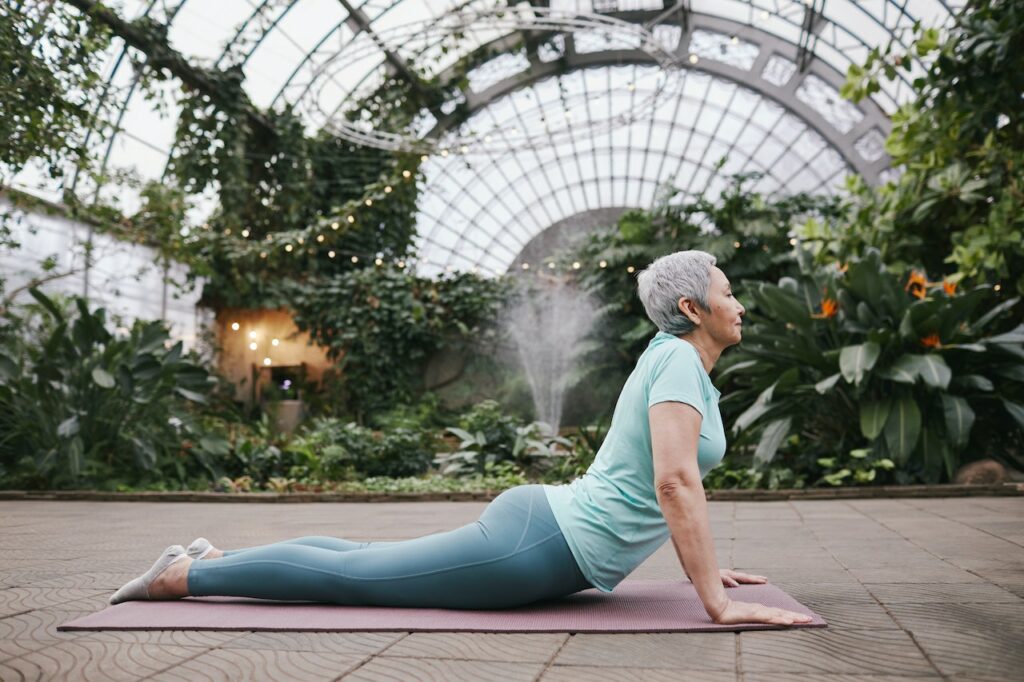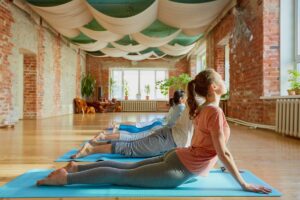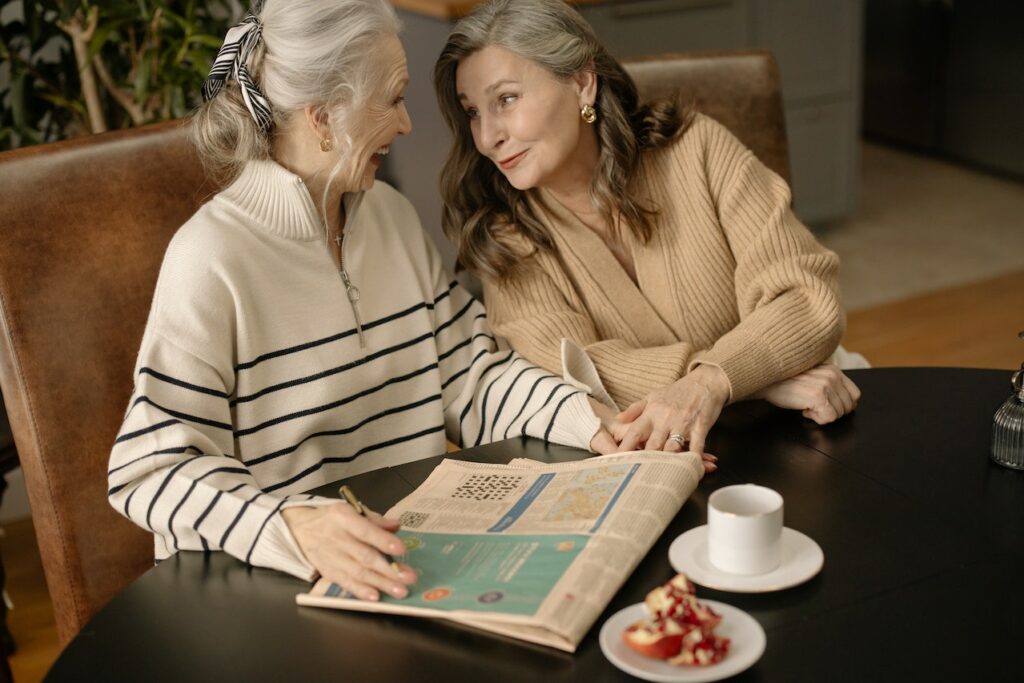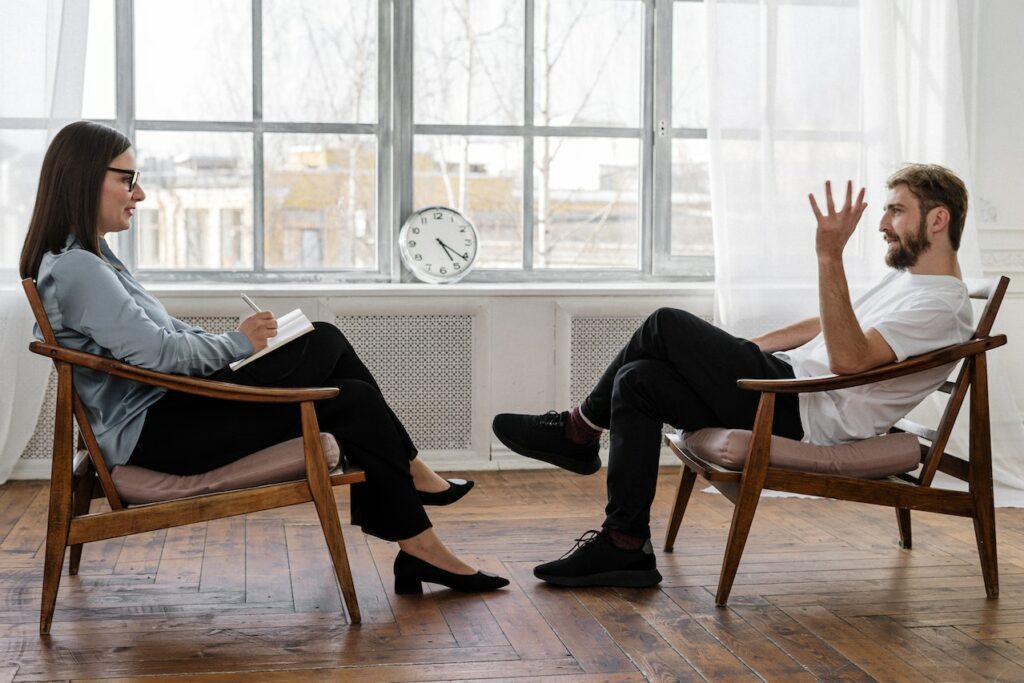Are you a 50-year-old American seeking a safe and convenient method to exercise? Yoga’s it! Yoga improves flexibility, balance, strength, tension, and anxiety.
With so many yoga postures, it might be hard to start. We’ve gathered 10 gentle and safe yoga positions for elders.
Did you know that “yoga” derives from the Sanskrit word “yuj,” meaning to connect or yoke? India has practiced yoga for thousands of years to connect the mind, body, and soul.
These positions will enhance your health and body awareness, whether you’re a novice or a seasoned yogi. Let’s get started!

Tadasana (Mountain Pose)
Mountain Pose (Tadasana) is the basis for all standing yoga postures. It improves posture, balance, and alignment.
Start the posture with your feet together, big toes touching, heels slightly apart. Lift your kneecaps and engage your thigh muscles while grounding through your four corners. Stretch your spine by drawing your tummy in and up. Engage your shoulder blades and lower your shoulders. Palms looking forward, arms at your side.
Tadasana requires balancing effort and relaxation. Focusing on the breath and making modest body alignment modifications may accomplish this.
All in all, this simple pose strengthens the legs, core, and breathing. Tadasana helps provide a solid foundation for subsequent standing postures.
Uttanasana—Standing Forward Bend
This pose stretches the hamstrings, hips, and back and calms the mind. This counterposes to backbends helps relieve bodily tension.
Start with Tadasana (Mountain Pose), feet together, hands on hips. Exhaling, tilt at the hips and fold forward, bringing your torso to your thighs. Let your head and arms droop. Tight hamstrings need a knee bend. Place your hands on the floor, blocks, or shins.
Breathe deeply and relieve tension while in the position. To relax your neck, gently swing your body or head.
Uttanasana stretches the hamstrings, hips, and back, relaxes the mind, and relieves tension and exhaustion.
Adho Mukha Svanasana (Downward-Facing Dog)
Sun salutations and vinyasa sequences commonly contain Downward-Facing Dog or Adho Mukha Svanasana. This full-body position strengthens and stretches the arms, legs, and spine.
Start on your hands and knees—wrists beneath shoulders, knees under hips. Exhaling, raise your hips up and back to form an inverted V with straight arms and legs. Your hands should be shoulder-width apart, your feet hip-width, and your heels should touch the ground.
Keep your arms and legs straight but not locked, and engage your core in this position. Relax and look at your navel or knees.
Adho Mukha Svanasana strengthens the arms, legs, core, hamstrings, calves, and spine and promotes alignment. It also relaxes the body and mind. This position improves cardiovascular health and relieves minor melancholy and anxiety.
Virabhadrasana I (Warrior I)
Warrior I, or Virabhadrasana I, strengthens the legs, arms, core, and hips. In my opinion, this is one of the best positions to start with – here’s why:
All you have to do is begin in Tadasana (Mountain Pose) with your feet together. Turn your left foot 90 degrees and step back 3-4 feet. Right knee bent, left leg straight. Reach the heavens with hands together. Shoulders down, look ahead.
Keep your front knee over the ankle and engage your core in this posture. Your arms should reach the sky, and your back leg should be sturdy.
Virabhadrasana strengthens the legs, arms, core, chest, and lungs, improving balance. It also reduces stress and improves concentration. This pose enhances balance, stability, and coordination.
Virabhadrasana II (Warrior II)
Warrior II, or Virabhadrasana II, is a standing yoga posture that strengthens the legs, arms, core, and hips and expands the chest. This stance boosts energy, attention, and balance.
Start in Tadasana (Mountain Pose), feet together. Turn your left foot 90 degrees and step back 3-4 feet. Right knee bent, left leg straight. Put your right arm in front of you and your left arm behind you, parallel to the floor. Watch your right hand.
Keep your front knee over the ankle and engage your core in this posture. Your arms should be parallel to the floor, and your back leg powerful. Look over your right hand and relax your shoulders.
Virabhadrasana II may also reduce stress and improve concentration. This stance increases stability, balance, and coordination.
Trikonasana (Triangle Pose)
Triangle Pose (Trikonasana) strengthens the legs, core, hips, chest, and shoulders. It improves balance and coordination.
Start in Tadasana (Mountain Pose) with feet 3-4 feet apart. Right foot out 90 degrees, left foot in slightly. Bend your right knee and raise your left arm parallel to the floor. Rest your right hand on your shin, ankle, or floor and reach down to your right ankle. Look left.
This pose is very similar to Warrior II: Keep your front knee over the ankle and engage your core in this posture. Your arms should be parallel to the floor and your back leg powerful. Look left and drop your shoulders.
Parsvottonasana (Pyramid Pose)
Pyramid Pose (Parsvottonasana) strengthens the legs, core, hips, chest, and shoulders. It resembles Trikonasana but has a different leg position. It improves balance and coordination.
Start in Tadasana (Mountain Pose) with feet 3-4 feet apart. Right foot out 90 degrees, left foot in slightly. Move your left foot 3-4 feet back. align your left heel and right foot arch. Bend your right knee and raise your left arm parallel to the floor. Rest your right hand on the ankle, shin, or floor and reach down to your right ankle. Look left.
Keep your front knee over the ankle and engage your core in this posture. Your arms should stay parallel to the floor, and your back leg should be tense. Look left and drop your shoulders. That’s all! Easy, right?
RELATED: These Are The 8 Best Yoga Towns in the US
Utthita Parsvakonasana (Extended Side Angle Pose)
Utthita Parsvakonasana, or Extended Side Angle Pose, strengthens the legs, core, hips, chest, and shoulders. It differs from Triangle Position (Trikonasana) and Pyramid Pose (Parsvottonasana) in arm alignment. It improves balance and coordination.
Start in Tadasana (Mountain Pose) with feet 3-4 feet apart. Right foot out 90 degrees, left foot in slightly. Move your left foot 3-4 feet back. Align your left heel and right foot arch. Bend your right knee and place your right elbow inside your right thigh. Side bends with your left arm over your left ear. Face your left hand.
Keep your front knee over the ankle and engage your core in this posture. Your arms should parallel the floor, and your back leg should be powerful. Look left and drop your shoulders.
Utthita Parsvakonasana strengthens the legs and core and opens the hips, chest, and shoulders. It may also reduce stress and improve concentration. This stance promotes balance and coordination.
Vrikshasana (Tree Pose)
Vrikshasana, called Tree Pose, develops legs, core, balance, and attention. It improves balance and coordination.
Start in Tadasana (Mountain Pose), feet together. Place your weight on your left foot and place your right foot on the inner thigh of your left leg. Clasp your hands before your heart to maintain balance and look straight ahead.
To balance in this posture, keep your knees pointed down and engage your core. Your arms and eyes should be in the heart center.
Vrikshasana strengthens the legs, core, balance, and attention. It may also reduce stress and improve concentration especially among seniors.

Savasana (Corpse Pose)
Savasana, often known as Corpse Pose, is a final yoga posture. It relaxes the mind and body.
Lying on your back on a mat or blanket starts the position. Let your feet fall open, and your arms rest at your sides, palms up. Shut your eyes and relax, sinking further into the mat with each breath.
The position should be comfortable and warm. Pillows help support your head and neck while laying on your back.
Savasana relaxes the mind, body, and spirit. It helps the body and mind absorb the practice’s advantages. This position improves sleep, reduces anxiety, and boosts flexibility at any age.









